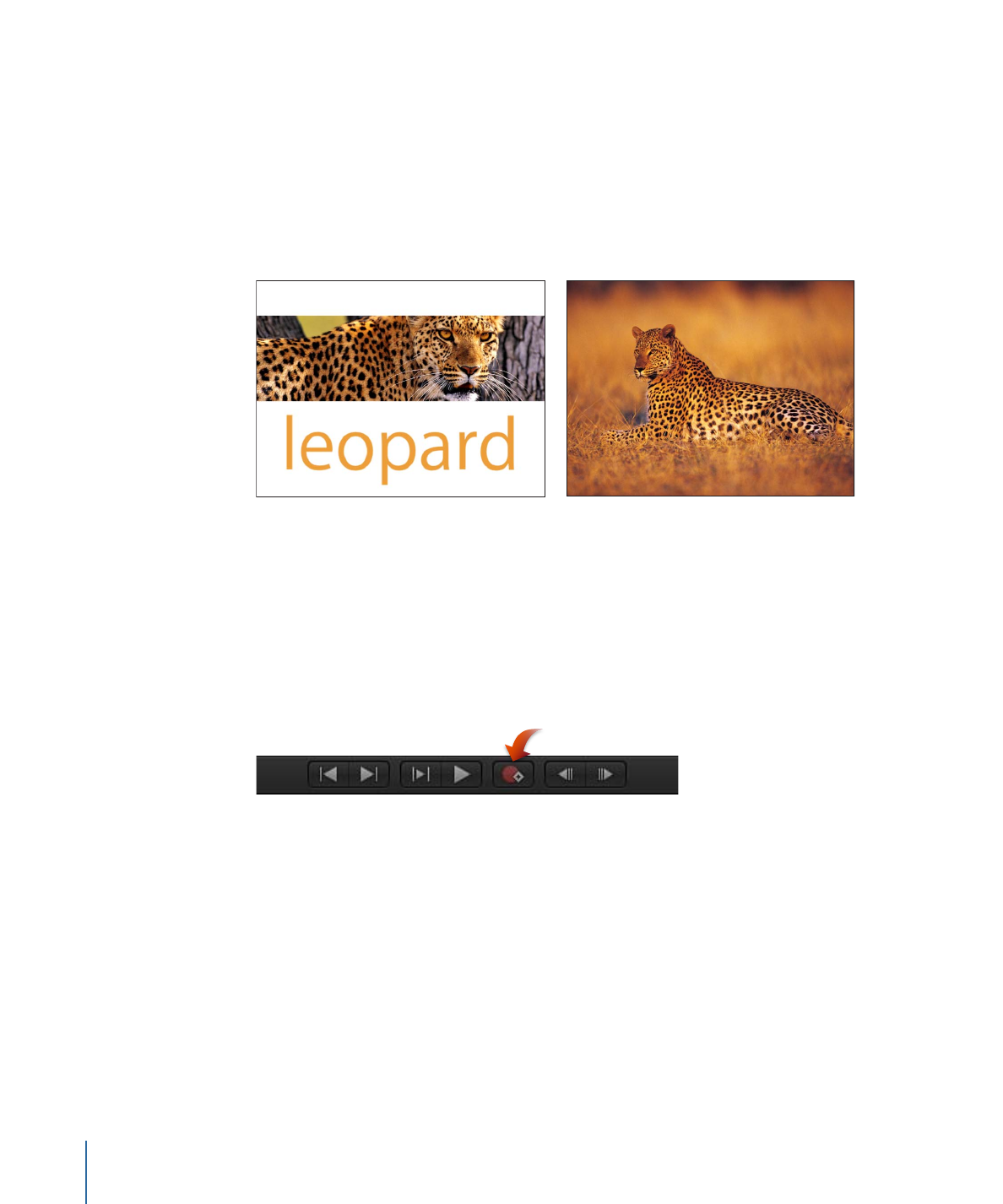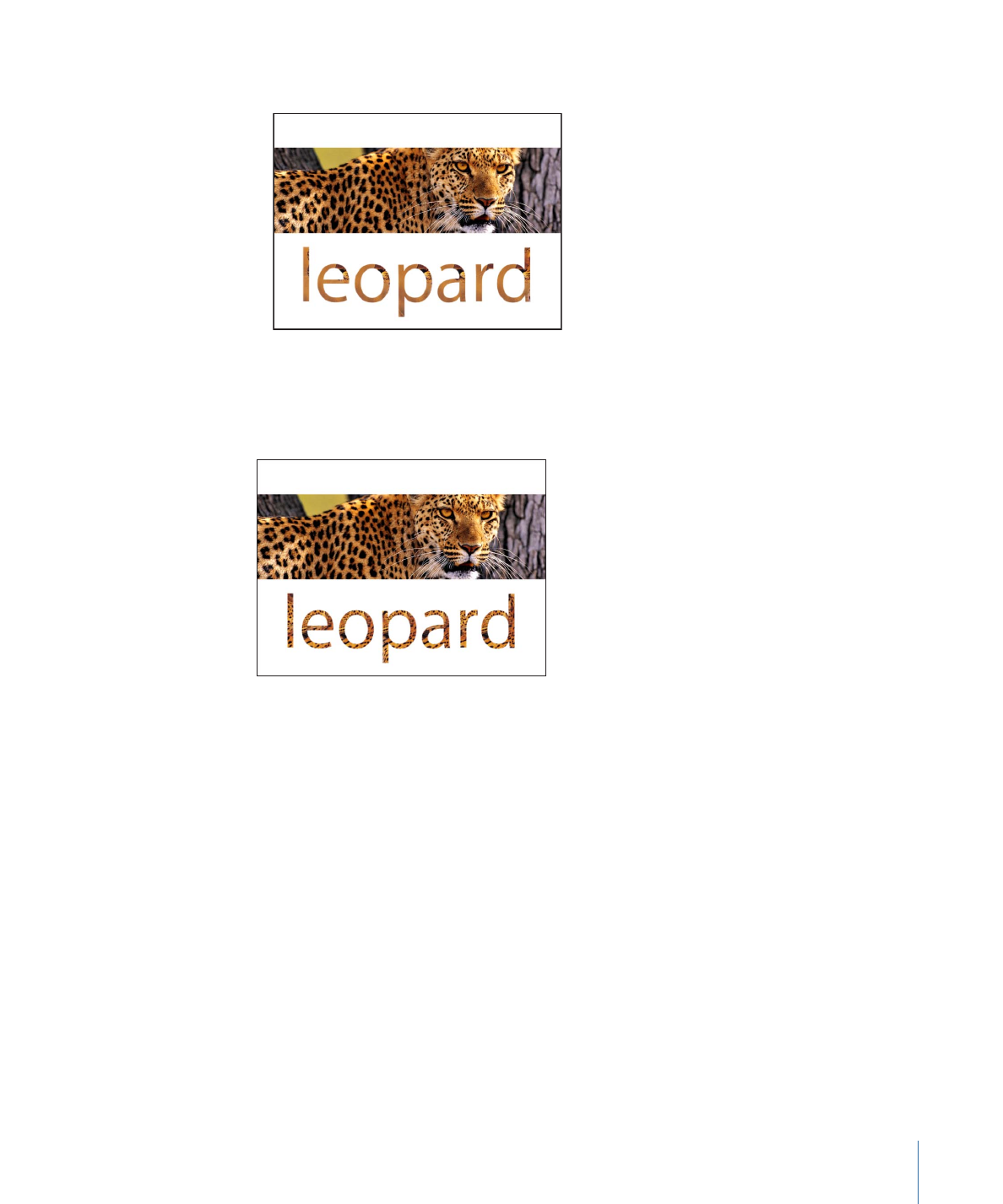
Animating a Texture
You can set keyframes for the offset values of the texture source to create a moving
element within text. In the following example, an image of a leopard lying in the grass
is used as the texture source for the text “leopard.”
Original text layer prior to texture
Image used as texture source
To animate the texture offset using the Record button
1
Apply a texture to the text.
For instructions on how to apply a texture to text, see
Using the Texture Image Well
.
2
Move the playhead to the frame where you want the texture animation to begin.
3
Enable Record (press A or click the Record button).
Note: When Record is enabled, a keyframe is created for any change you make to an
object in your project.
4
To position the texture, do one of the following:
• Press Command, then drag in the Image well.
• Use the Offset value sliders to enter an offset value.
852
Chapter 16
Creating and Editing Text

The image within the text moves, and a keyframe is created in the Offset parameters.
Text layer with texture applied
5
Move the playhead to the next frame where you want to set a keyframe.
6
Move the texture to the new position.
Repositioned text layer texture
7
Disable Record.
8
Go to frame 1 (or the start frame of the animation) and play the clip.
The texture offset is animated.
Note: You can also use the Animation menu in the Inspector to set keyframes without
enabling Record. For more information, see
Keyframes and Curves
.
To animate the texture offset by manually adding a keyframe
1
Apply a texture to the text.
For instructions on how to apply a texture to text, see
Using the Texture Image Well
.
2
Move the playhead to the frame where you want the texture animation to begin.
3
In the Style pane of the Text Inspector, add a keyframe to the “Fill with” parameter or the
Offset parameter.
853
Chapter 16
Creating and Editing Text

4
To position the texture, do one of the following:
• Press Command, then drag in the Image well.
• Use the Offset value sliders to enter an offset value.
The image within the text moves, and a keyframe is created in the Offset parameters.
5
Move the playhead to the next frame where you want to set a keyframe.
6
Move the texture to the new position.
7
Go to frame 1 (or the start frame of the animation) and play the clip.
The texture offset is animated.
For more information on the different keyframing methods, see
Keyframing Methods
.
Using an Object Containing Behaviors and Filters as a Texture Source
You can use any object (image, movie, image sequence, shape, replicator, particle system,
group, or other text object) that has applied behaviors and filters as a texture source
for text. The effect of the filters appears in the texture, but animation effects do not
appear in the texture.
When using an object with an applied filter as a texture source:
• To use the object with the effect of the filter, follow the steps in
Using the Texture
Image Well
.
• If the object is an image or image sequence, you can use the object without the effect
of the filters by dragging the image from the Media list to the Texture Image well,
rather than from the Layers list.
• To use an object without the effect of the applied filter, make a copy of the layer in
the Layers list, remove the filters from the new layer, then turn the layer off. You can
then drag the layer from the Layers list to the Image well.
When using an object with an applied behavior or active transforms (for example, rotate)
as a texture source:
• Use the steps in
Using the Texture Image Well
. The effects of the behavior or transforms
are ignored.